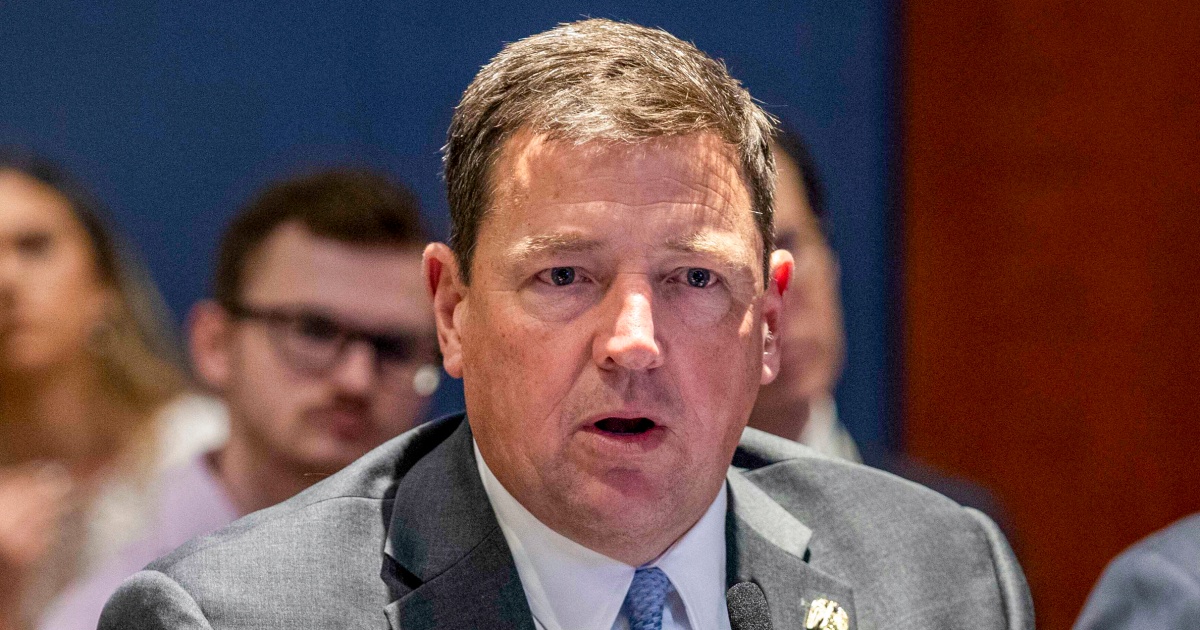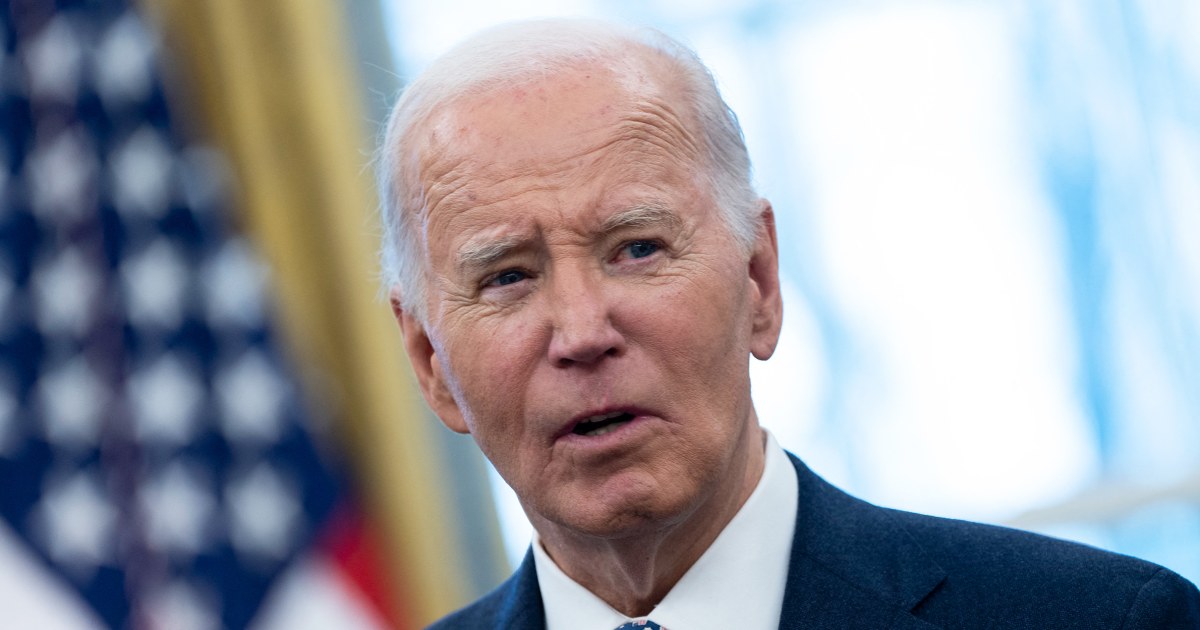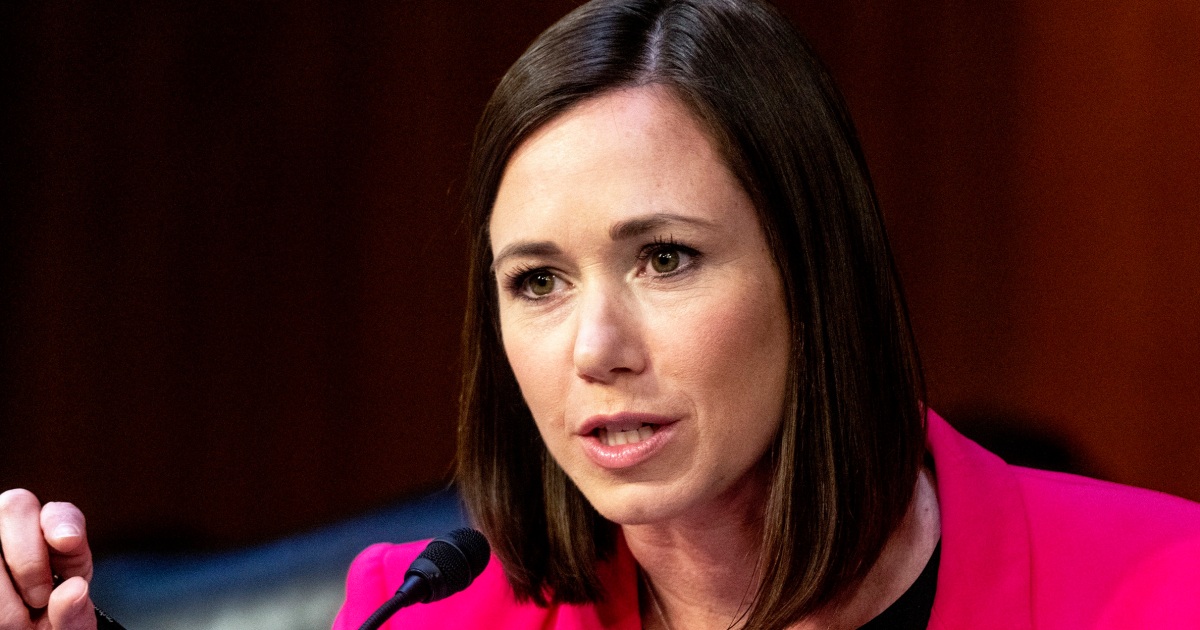This post will be updated as election results come in.
Two years after the US Supreme Court ended the federal right to abortion, tens of millions of Americans will go to the polls this November hoping to protect access to the procedure—whether their lawmakers like it or not. Ten states— some already with robust protections, others with near-total bans—have measures on their ballots to enshrine abortion rights in their constitutions. The expected outpouring of voters, including in key swing states, could help determine control of the White House, Congress, state legislatures, and state supreme courts.
Reproductive freedom has proved to be one of the strongest currents shaping the outcome of American elections since 2022. So far, voters in seven states have reacted to the end of Roe v. Wade by passing ballot measures aimed at restoring, and even expanding, Roe’s protections. In a few of those states, the voter-initiative process empowered the public to bypass GOP-dominated legislatures and supersede decades-old restrictions. Reproductive rights organizers are hoping to continue that winning streak on November 5.
But faced with the broad appeal of abortion initiatives in GOP-led states such as Ohio, Republican officials have gone to sometimes extreme lengths to undermine the latest measures. In Florida, for example, Gov. Ron DeSantis has waged a multifront war on Amendment 4, threatening television stations that air ads favoring the measure and issuing a 348-page report accusing the Floridians Protecting Freedom campaign of “widespread petition fraud.”
While most of this year’s measures have a common objective—protecting reproductive access—they take very different approaches to reaching that goal. Here is a rundown of what’s on the November ballot, which we will update as election results become available.
Arizona
Update, November 6: Proposition 139 soared to victory shortly after midnight, garnering 61.7 percent support with 60 percent of votes counted, according to the Associated Press.
In anticipation of the end of Roe, Arizona Republicans passed a 15-week abortion ban in early 2022. But they also left in place an 1864 statute that outlawed nearly all abortions and threatened providers with jail time—a “zombie” law that was moot as long as Roe was in effect. This past April, the Arizona Supreme Court revived that Civil-War era ban by a 4–2 vote. The GOP-controlled legislature quickly repealed the old law, but many Arizonans were outraged at what the court had done, and the campaign to put Proposition 139 on the November ballot exploded. Prop 139 would enshrine a fundamental right to abortion in the Arizona Constitution and prohibit the state from restricting or banning abortion until the point of fetal viability—about 24 weeks. Abortions would be allowed later in pregnancy to save the mother’s life or to protect her physical or mental health. The amendment would also protect anyone who helps another person obtain an abortion.
A coalition of reproductive rights groups certified more than 575,000 signatures this past summer—the most ever validated for a citizens initiative in the state’s history, supporters said. In a New York Times/Siena College poll in late September, Prop 139 was ahead among likely voters by a resounding 58 percent. If it passes, Prop 139 could be used to challenge almost 40 abortion laws on Arizona’s books, including the existing 15-week ban, a prohibition on telehealth abortions, and a parental consent requirement for teenagers.
Colorado
Update, November 5, 10:38 p.m. ET: Amendment 79 passes with 61.5 percent support and 62 percent of votes counted, the Associated Press projects.
Long before the Dobbs decision, Colorado legislators passed numerous laws safeguarding access to abortion. But after Dobbs, reproductive health advocates in the state concluded that even the strongest statutes weren’t strong enough—Colorado needed to enshrine those protections in its constitution. The measure they put on the November ballot, Amendment 79, wouldn’t just establish a right to abortion; it would repeal a 40-year-old constitutional provision that prohibited the use of state dollars to fund abortion. Sponsored by a coalition called Coloradans for Protecting Reproductive Freedom, the measure needs 55 percent of votes to pass.
Surrounded by states with bans or heavily restrictive laws, Colorado is a crucial abortion access point for the West. With no gestational limits, the state is also a haven for anyone seeking an abortion later in pregnancy, as it is home to one of four clinics in the US that offer third-trimester procedures. Repealing the ban on state funding would allow Colorado to use its state Medicaid dollars to pay for abortions, making the procedure more accessible for low-income patients.
Florida
Update, November 5, 9:15 p.m. ET: With 91 percent of votes counted, Amendment 4 has failed, the Associated Press projects. It garnered 57 percent support, short of the 60 percent threshold. Read more here.
Florida’s Amendment 4 would enshrine in the state’s constitution the freedom to seek an abortion before fetal viability, and after viability if a medical provider determines that the procedure is necessary to preserve a patient’s health.
Gov. DeSantis and his GOP administration have done everything they can to sabotage the amendment—including sending “election police” to the homes of people who signed the petitions.
If the measure passes, it would dramatically improve access to reproductive care in Florida, which since May has banned abortions after six weeks of pregnancy. Before that, the state permitted abortions up to 15 weeks, and before Dobbs, until 24 weeks. The impact of the Florida vote will be felt throughout the Southeast: Tennessee, Alabama, Arkansas, Mississippi, and Kentucky all have near-total abortion bans; Georgia and South Carolina have six-week bans, and North Carolina’s 12-week ban is made more burdensome by a 72-hour waiting period.
The stakes for passage are high, and so are the barriers. Over the last several election cycles, Florida has turned out more conservative voters than liberal ones. While reproductive rights are popular across the political spectrum, the state has a 60 percent threshold to approve constitutional amendments; the other red states that have passed abortion-protective measures since Dobbs—Kansas, Kentucky, Ohio—only required simple majorities. Meanwhile, Gov. DeSantis and his GOP administration have done everything they can to sabotage the amendment—including sending “election police” to the homes of people who signed the petitions, ostensibly to root out fraud. If the measure passes, DeSantis and his allies are widely expected to fight just as hard to overturn the results.
Maryland
Update, November 5, 9:32 p.m. ET: The Associated Press projects Maryland’s Question 1 has passed with 74 percent support and half of votes counted.
Maryland’s Question 1, which was placed on the November ballot by the state legislature, does not mention “abortion”—much to the chagrin of supporters and opponents alike. Instead, the amendment broadly establishes the constitutional right to “reproductive freedom,” including the freedom to decide whether to continue or end a pregnancy. It needs a simple majority to pass.
Maryland already has some of the least restrictive abortion laws in the country: There is no gestational limit, state Medicaid covers the procedure, and a shield law protects patients who travel from states with abortion bans. This has made the state a critical access point for abortion seekers further along in pregnancy, as well as people traveling from the South. Abortion protections are widely popular in the state; in a recent poll by the University of Maryland, Baltimore County, 69 percent of respondents said they plan to vote for Question 1.
Missouri
Update, November 6: Amendment 3 just squeaked by, passing with 51.7 percent support and 99 percent of the vote counted, according to the Associated Press. Missouri is the first state to have a near-total abortion ban reversed by popular vote.
Missouri’s near-total abortion ban took effect mere minutes after the Supreme Court overturned Roe v. Wade in 2022—making it the first state in the nation to broadly prohibit abortion. Abortion-rights advocates soon set about crafting a ballot initiative to end the ban, inspired by wins in other states. Now, with Amendment 3, voters will decide whether they want the right to “reproductive freedom”—defined as the ability to make and carry out one’s own decisions about contraception, abortion, and healthcare during pregnancy. If approved by a simple majority, the amendment would set up a legal battle to overturn the current ban and challenge the many other Missouri laws that regulated abortion providers nearly out of existence even when Roe was still in effect.
Amendment 3’s proponents, a coalition known as Missourians for Constitutional Freedom, have traveled a rocky road just to get the measure before voters. They’ve overcome blatant obstruction by top state GOP officials, multiple legal challenges, and deep internal divisions over whether the initiative should allow the state to ban abortions after fetal viability. The final text protects abortion rights until viability, and permits later abortions if needed to protect the life or health of the pregnant person.
Montana
Update, November 6: CI-128 won comfortably in a state with a record of supporting reproductive rights. With 93 percent of votes counted, the initiative passed with 57.2 percent support, according to the Associated Press.
Constitutional Initiative 128 establishes the right to make and carry out decisions about one’s own pregnancy, including abortion. If passed, it would allow the state to regulate abortion after fetal viability, so long as those restrictions don’t prevent abortions that health care providers deem medically necessary. The amendment, which requires more than 50 percent of the vote, would also prevent the government from criminalizing patients and anyone who helps a person exercise her abortion rights.
If top Republican state officials had it their way, the measure would not even be on the ballot. State courts intervened at multiple points; the Montana Supreme Court overruled Attorney General Austin Knudsen’s initial rejection of the proposed amendment, nixed Knudsen’s drafted ballot language saying the amendment “may increase the number of taxpayer-funded abortions,” and threatened Secretary of State Christi Jacobsen with a contempt charge because she refused to hand over the sample ballot petition to the campaign behind the amendment, Montanans Securing Reproductive Rights. After abortion rights supporters submitted nearly double the required 60,000 signatures, Jacobsen even tried changing the rules to throw out the signatures of inactive registered voters, until a district court ordered her to stop.
Thanks to the state supreme court, abortion is currently legal in Montana until fetal viability, despite the best efforts of Republican state legislators to restrict access. Montanans have already brushed off one GOP attempt to stigmatize abortion; in November 2022, 52 percent of voters rejected a legislature-initiated statute that would have made it a felony for doctors to not provide care to infants born alive after induced labor, a cesarean section or an “attempted abortion.” (The law wasn’t necessary since Montana, like every other state, already makes infanticide a crime.)
Nebraska
Update, November 6: The anti-abortion measure prevailed in Nebraska, according to the AP. With 99 percent of the vote counted, the more restrictive measure had 496,586 votes in favor, compared to 437,673 votes for the measure that would have made abortion a fundamental right.
Nebraska voters will see dueling abortion amendments on their November ballots. Initiative 434 restricts abortion rights, banning the procedure after 12 weeks of pregnancy with limited exceptions. That’s essentially the same law already on the state’s books—but the measure would enshrine it as a constitutional amendment, making it much harder to repeal. And because the amendment doesn’t protect abortion before the 12-week mark, state politicians could always go further and pass a complete ban, as Republican Gov. Jim Pillen has pledged to do.
By contrast, Initiative 439 expands abortion rights, creating a “fundamental right to abortion until fetal viability, or when needed to protect the life or health of the pregnant patient.” In practice, the amendment would roughly double the length of time for pregnant people in Nebraska to get an abortion. Crucially, it would block lawmakers from passing a total ban.
If the double initiatives sound confusing, well, that’s the point. Anti-abortion activists have repeatedly tried to muddy the waters about which ballot initiative is which, as Rachel Cohen at Vox has reported. They’ve also tried to get the pro-abortion initiative thrown off the ballot on a technicality, but the Nebraska Supreme Court shot them down.
Given the confusion, it is possible that both measures could pass. In that case, the one with the most votes wins.
Nevada
Update, November 6: Nevadans voted overwhelmingly to create a constitutional right to abortion. With 84 percent of the votes counted, Question 6 was winning by a nearly 2-to-1 margin, having garnered 63.3 percent of the vote, according to the AP.
Nevada, one of the swingiest states in the 2024 election, has its own version of the Equal Rights Amendment, passed by voters in 2022. But it didn’t explicitly mention protections for abortion. Question 6 constitutionally enshrines the right to abortion until fetal viability or for the health or life of the mother, as determined on a case-by-case basis by health care providers. Any pre-viability restrictions must be directly related to promoting the health of the pregnant person and “consistent with accepted clinical standards of practice.” This year’s vote is just the first step in a multiyear process; assuming a simple majority of voters approve it, the measure must be passed again in 2026 to become part of the constitution.
Thanks to a law passed in 1973, abortion has been legal in Nevada until 24 weeks. Because voters passed a referendum on that law in 1990, it can only be changed by a direct ballot measure. Protections for abortion are very popular in Nevada; a University of Maryland poll conducted over the summer found that about 70 percent of state voters oppose criminalizing abortion at any stage of pregnancy. The campaign behind the amendment, Nevadans for Reproductive Freedom, has raised nearly $10 million since January, according to campaign finance reports; the Coalition for Parents and Children PAC, which successfully sued to block an initial version of the amendment that covered reproductive healthcare more broadly, hasn’t raised or spent any money.
New York
Update, November 5, 9:42 p.m. ET: Prop 1 passes with 72 percent support and 31 percent of votes counted, the Associated Press projects. Read more here.
New York’s Proposal 1 may not include the word “abortion,” but it would create first-in-the-nation protections for the rights of pregnant people.
The proposal is a broad version of the Equal Rights Amendment, the long-running feminist effort to guarantee women’s rights in state and federal constitutions. Right now, New York’s constitution only forbids government discrimination on the basis of race and religion. Prop 1 adds more protected categories to that list: disability, age, ethnicity, national origin, and sex, including sexual orientation, gender identity, and gender expression. Those types of discrimination are already banned under state law, but by enshrining protections in the constitution, Prop 1 would make them harder for legislators to attack in the future—for example, if New York politics keep trending rightward.
Here’s where abortion comes in: The amendment also bans discrimination based on “pregnancy status, pregnancy outcomes, and reproductive health care and autonomy.” Not only does that definition go farther than any other state, it leaves little room for judges to interpret in ways that might limit abortion access, according to Katharine Bodde, of the New York Civil Liberties Union.
Yet while New York Democrats initially viewed Prop 1 as a surefire way to boost voter turnout, their right-wing opponents have seized on transphobic messaging to great effect—making this blue-state fight unexpectedly close.
South Dakota
Update, November 6: South Dakota’s effort to pass a limited right to abortion failed by a wide margin, receiving just 40.5 percent support with 93 percent of votes counted, according to the AP.
South Dakota’s current abortion ban is one of the most extreme in the country, with all abortions banned except when needed to save a pregnant person’s life. Amendment G, backed by a group called Dakotans for Health, would replace that law with a trimester-based system allowing increasing restrictions on abortion as a pregnancy progresses.
In the first trimester, the state would be banned from interfering with “a woman’s abortion decision and its effectuation.” In the second trimester, the state could restrict abortion in ways “reasonably related to the physical health of the pregnant woman.” Third-trimester abortions could be banned, except when necessary to preserve a pregnant person’s life or health. The amendment needs a simple majority to pass.
Planned Parenthood and other abortion-rights groups aren’t supporting Amendment G, which they’ve said doesn’t go far enough. But the conservative Republicans who dominate state politics are still so terrified of the measure that they passed an emergency law to let voters revoke their petition signatures—then opponents of the measure led a phone banking effort to dupe signers into pulling their support. Why are state Republicans spooked? “If you can do it in South Dakota, it will strike fear into the hearts of every red-state legislature in the country,” Dakotans for Health co-founder Adam Weiland told the American Prospect.
Madison Pauly, Abby Vesoulis, Julianne McShane, and Nina Martin contributed reporting. This is a developing story. Check back for updates.
Top image photo credits: Octavio Jones/AFP/Getty; RJ Sangosti/The Denver Post/Getty; William Campbell/Getty; Rachel Aston/Las Vegas Review-Journal/Getty; Getty(3)















